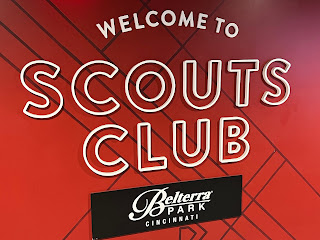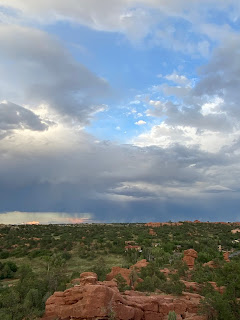Cincinnati
July 10, 2022
Cincinnati
Screenwriter Ryan Murphy, who was born in Indianapolis a year after I was once said, “Well, I'm from Indiana. So to me when I was a little kid growing up, Cincinnati was the glamorous New York of it all.” I can certainly sympathize with his sentiment. Indianapolis had not grown into the city it currently is and the “Naptown” nickname was mostly well earned. Cincinnati, on the other hand, seemed like the big city.
It was home to my favorite football team, my beloved Bengals and of course the Big Red Machine, the Cincinnati Reds who were the dynasty of the time when I was a kid and actually still liked baseball. We would travel to Cincinnati from time to time when I was a kid, mostly to visit the coolest amusement park on the planet- King’s Island.
King’s Island- which is celebrating it 5oth year this year, was so cool that both the Brady Bunch and the Partridge Family paid visits to the park, I mean how much cooler could you get. Later as I entered my high school and college years, I would travel to Cincinnati to see live music, moistly at venues like Bogart’s or Sudsy Malone’s which usually featured bands that at that time were skipping Indianapolis.
So, it was nice to be back in Cincinnati and have the chance to explore a few places that I had never seen rather than visit their zoo or King’s Island yet again. With a day to explore, I started downtown along the Riverfront. The reason I choose that location is because I wanted to visit the Underground Railroad Museum, but it was not yet open when I arrived, so I walked over to the nearby Cincinnati Reds Hall of Fame Museum located at Great American Park, home of the MLB team.
The Cincinnati Reds Hall of Fame and Museum is an entity established by Major League Baseball's Cincinnati Reds franchise that pays homage to the team's past through displays, photographs and multimedia. It was instituted in 1958 to recognize the career of former Cincinnati Reds players, managers and front-office executives. It is adjacent to Great American Ball Park on the banks of the Ohio River. Currently, the Hall of Fame section is home to 81 inductees. These inductees include players, managers & executives who were involved in Cincinnati's baseball legacy, which dates back to 1869, the year the original Cincinnati Red Stockings took the field. Inductions take place every other year.
I am not a huge baseball fan, but I do appreciate history and I do remember the glory years of the Reds so I found the museum to be pretty damn cool. I was so inspired that I signed up for a behind the scenes tour of the stadium itself. The tour included a look behind the scenes of the stadium including the many special clubs, press box, and even an on the field inspection of the dugouts. The field was covered as there was a game to be played against Tampa Bay that night, which is also why we did not get a look at the dressing rooms as players were undergoing preparations for the game.
It was a cool experience, one that I had not planned for or expected. Afterwards, I walked the short distance to the National Underground Railroad Freedom Center. It is one of a new group of "museums of conscience" in the United States, along with the Museum of Tolerance, the United States Holocaust Memorial Museum and the National Civil Rights Museum. The Center offers insight into the struggle for freedom in the past, in the present, and for the future, as it attempts to challenge visitors to contemplate the meaning of freedom in their own lives.
Its location recognizes the significant role of Cincinnati in the history of the Underground Railroad, as thousands of slaves escaped to freedom by crossing the Ohio River from the southern slave states. Many found refuge in the city, some staying there temporarily before heading north to gain freedom in Canada.
My third museum experience was slightly less serious as I visited the American Sign Museum. The museum celebrates signs of all types and feature over 200 signs and other objects are on display at the museum,and over 3,800 items are cataloged. The collection ranges from the late nineteenth century to the 1970s. Highlights of the collection include samples of gold leaf lettering on glass, a Sputnik-like plastic orb from an Anaheim shopping center, a rotating neon windmill from a Denver donut shop, Las Vegas showcards, and a fiberglass Frisch's Big Boy statue with a slingshot in his pocket. (The slingshot was omitted from later models of the Big Boy statue.) One can also find signs from businesses such as Big Bear Stores, Howard Johnson's, and Earl Scheib. Over the museum's entrance, visitors are greeted by a 20-foot-tall (6.1 m) fiberglass genie from a Los Angeles carpet cleaning company.
I closed out my Cincy day by going out to eat with the reason that I came to town. My friend Brooke and her adorable daughter Jo took me out to Cartridge Brewing for a wonderful dinner before she got too busy with the events associated with her wedding.




















































